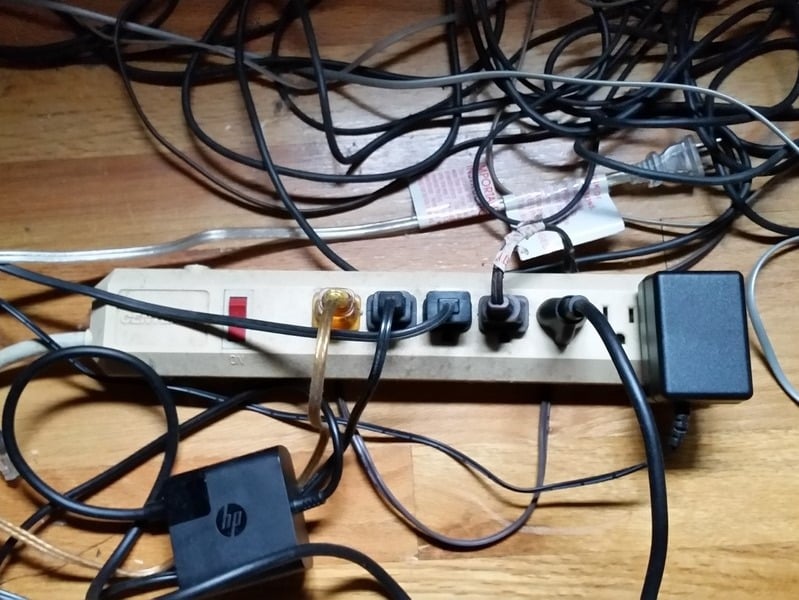
Today's photo caption: Warp engines, Mister Scott. I NEED MORE POWER.
Welcome back to Tech Service Today's IT Disaster of the Week series where we showcase the ugliest IT environment our technicians ran into this week.
Our featured photo is not the worst disaster we ran into this week, but it represents something we can all relate to: our need for more power outlets.
In our techno-centric world, we're always looking to recharge our devices. And there always seem to be far more devices needing power than there are electrical outlets. So we use power strips (some of which have built-in surge suppression) to turn one outlet into many. But this practice can spell trouble if you don't follow a few simple safety measures.
The first rule is a simple one: Never daisy-chain your power strips. Even if you don't know how to calculate how many watts or ohms each of your devices needs (versus what a single AC outlet can deliver), using simple common sense can keep you safe. The more devices you plug into a single outlet, the more dangerous it becomes. So if every outlet on your power strip is in use, plug a new power strip into a different circuit.
The second safety tip is Never overload your power strip with too many power-hungry devices. If you plug six clock radios and/or desk lamps into a power strip, you have nothing to worry about. But if you are plugging in six high-end computers and/or network devices (switches, routers, WAPs) , then you are getting into a dangerous area where your power strip may catch fire and/or melt. As a safety precaution, feel the power cords of each device plugged into your power strip. If any of them feel warm, you need to remove it from the strip and connect it to another power circuit.
The third way to ensure you power strips are safe to use (and not a potential fire source) is to make sure they haven't been recalled. Over the last several years, companies like Schneider/APC, Legrand Wiremold, and Belkin have all issued massive recalls on power/surge strip products due to their potential to cause fires. To see if your power/surge strips are among those recalled, check the Consumer Product Safety Commission website (cpsc.gov) or manufacturer websites (like APC's recall site).
While power can occasionally be a dangerous thing, knowledge can be a powerful thing. And our goal is to help every IT professional practice safety on the job so they don't become our next IT Disaster of the Week.
Check back every Friday for TST's latest IT Disaster of the Week photo
which represents one of the thousands of customer sites our technicians visit every year as they install and service IT, networking, and telecom equipment & cabling for our clients.
Click here to see last week's IT Disaster photo.
Do you already have an IT disaster that needs to be cleaned up?
It doesn't take a rocket scientist to install a network. But to ensure that your equipment, racks and cabling are installed properly in an organized, efficient fashion, it does require the talents of a skilled IT technician. If you need help installing or cleaning up your network, contact Tech Service Today to have a skilled, seasoned Technician dispatched to your site.
At Tech Service Today, We SIMPLIFY IT, SERVICE IT, and SOLVE IT.
Call TST when you need on-site technical services anywhere in North America, even same-day when time is of the essence.
Call (800) 973-2022 (option 1), or Email us at Service@TechServiceToday.com

